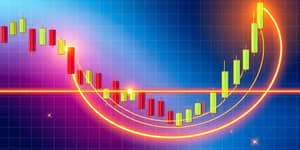
Behavioral economics offers an illuminating lens through which we can observe the interplay between the human mind and financial markets. By uncovering hidden biases and emotional drivers, this field empowers investors to make more informed decisions and navigate uncertainty with confidence.
At its core, behavioral economics merges principles of psychology and economics to reveal how real people behave in financial contexts. Traditional economic models assume rational actors, yet we know that emotions, social pressures, and cognitive shortcuts often sway our choices.
Since Daniel Kahneman’s groundbreaking research and Nobel Prize in 2002, this discipline has reshaped our understanding of market behavior. Today, it guides not only investors but also policymakers, helping to design interventions that protect individuals and stabilize markets.
Systematic psychological biases influence the way we perceive risk and reward. Heuristics—mental shortcuts—help us make quick decisions but can also lead us astray when markets behave unexpectedly.
Common biases include:
Understanding these tendencies is the first step toward mitigating their impact on your portfolio.
Investor sentiment plays a pivotal role in price movements. When confidence soars, markets often climb higher—but excessive optimism can sow the seeds of a bubble. Conversely, fear and panic can trigger rapid sell-offs, turning corrections into crashes.
Emotional swings magnify market volatility by amplifying buying and selling pressures. Recognizing these patterns helps investors avoid the trap of chasing peaks or fleeing at troughs.
Armed with insight into human psychology, investors can adopt practical strategies to counteract biases and improve outcomes. Here are four approaches to consider:
By embedding these practices, you can turn psychological insight into action and maintain discipline even when emotions run high.
Historical episodes underscore the power of investor psychology. During the dot-com bubble, rampant enthusiasm for internet stocks led to astronomical valuations, only to crash spectacularly in 2000. The 2008 financial crisis was fueled by herd behavior in the housing market, as widespread belief in ever-rising home prices encouraged risky lending and borrowing.
More recently, the GameStop saga highlighted how social media hype and collective action can drive extreme price swings. These events serve as powerful reminders of how psycho-emotional drivers of market trends can overwhelm fundamentals.
In an era of rapid information flow and social media influence, behavioral economics is more relevant than ever. Investors can harness sentiment indicators, social listening tools, and crowd-sourced data to gauge market mood and anticipate turning points.
For policymakers, incorporating behavioral insights into regulations and disclosure requirements can enhance market stability. Initiatives like mandatory investor education programs and risk-awareness campaigns aim to reduce the impact of biases on retail traders.
Behavioral economics offers a profound understanding of how human psychology shapes financial markets. By recognizing common biases and employing structured strategies, investors can navigate volatility with greater confidence and resilience.
As you deepen your knowledge and refine your approach, remember that markets are not just numbers on a screen—they are reflections of collective human behavior. With this perspective, you can transform how you engage with investing and pursue long-term success.
References













